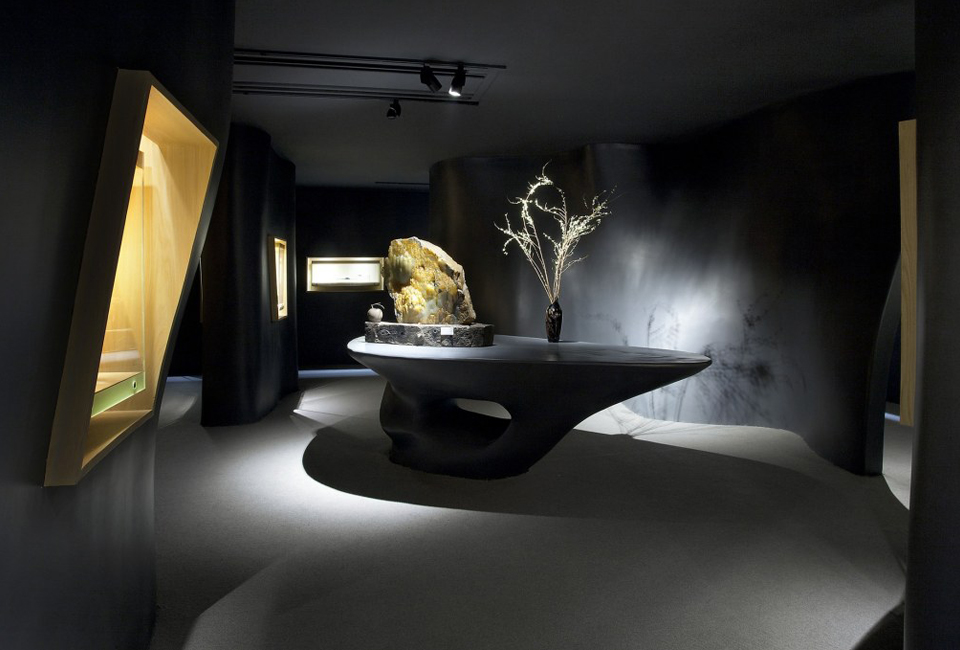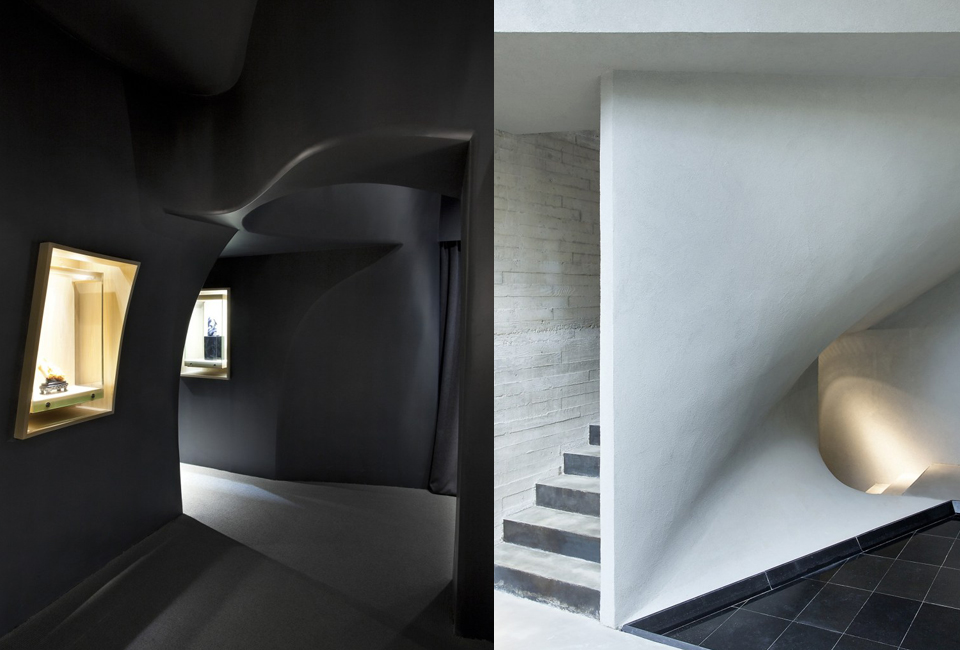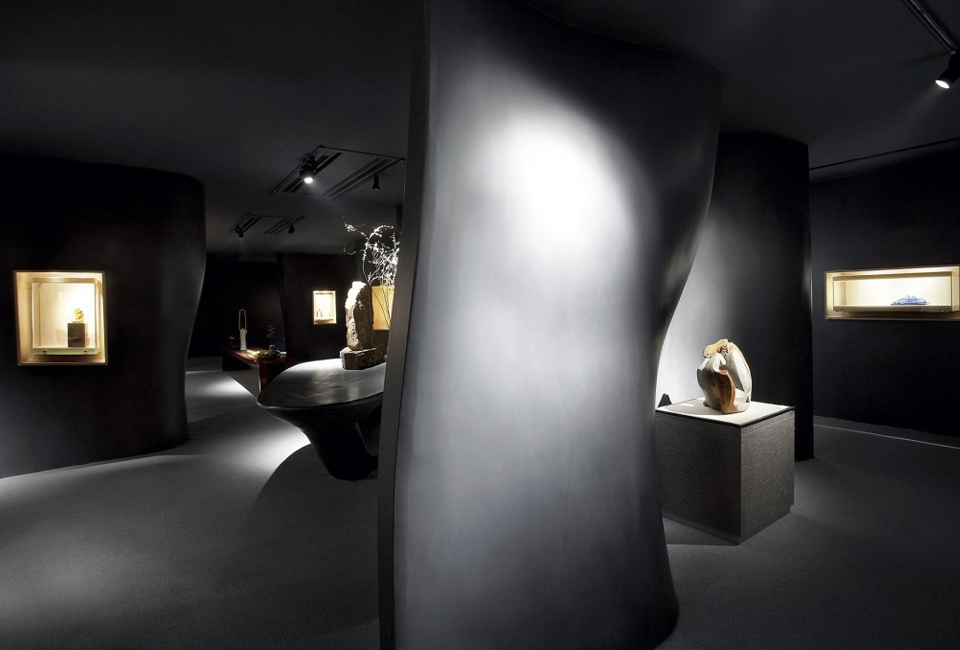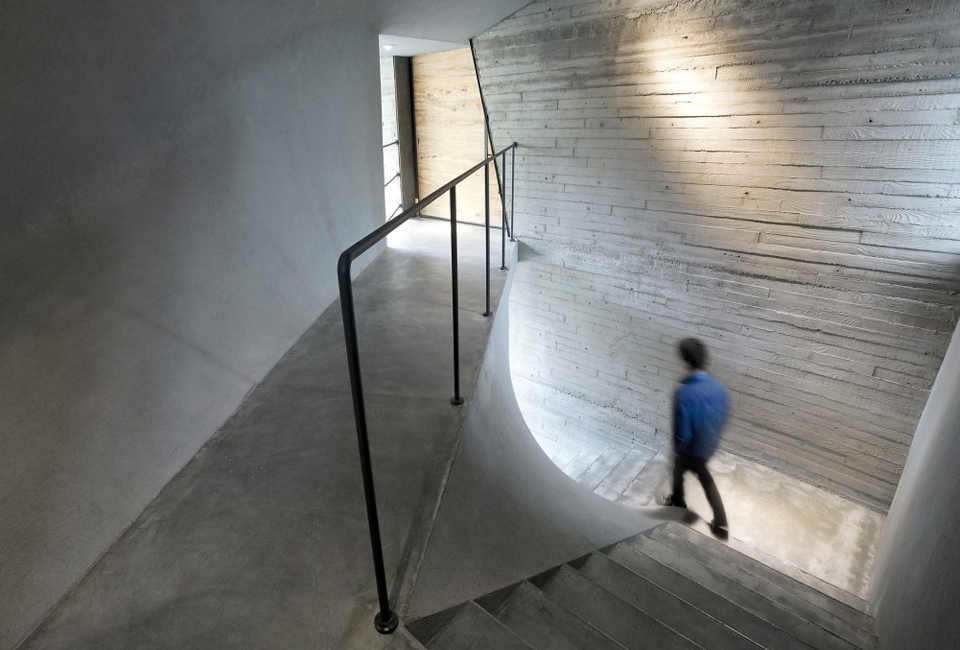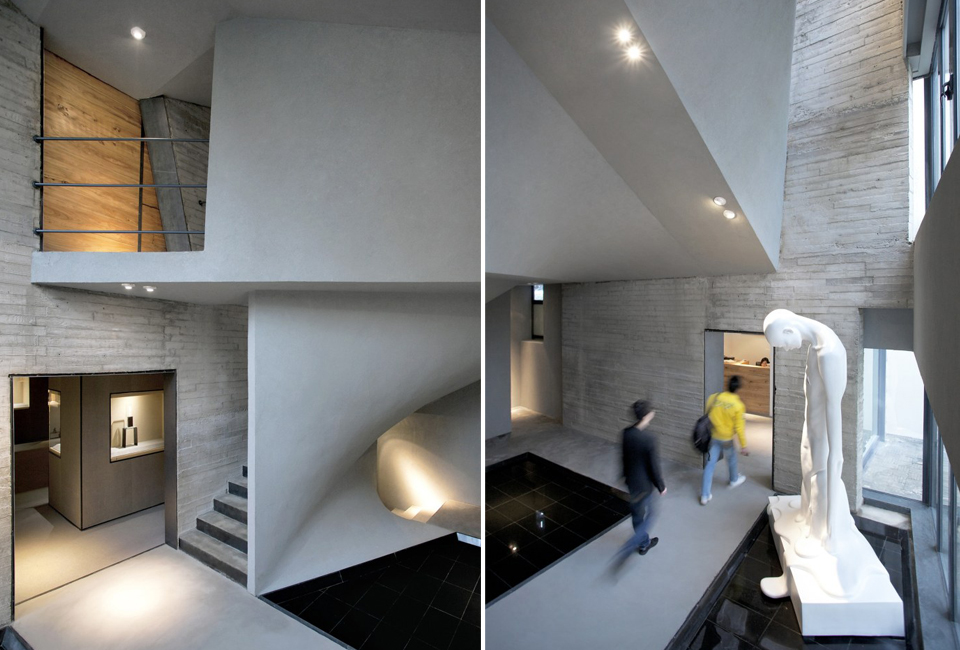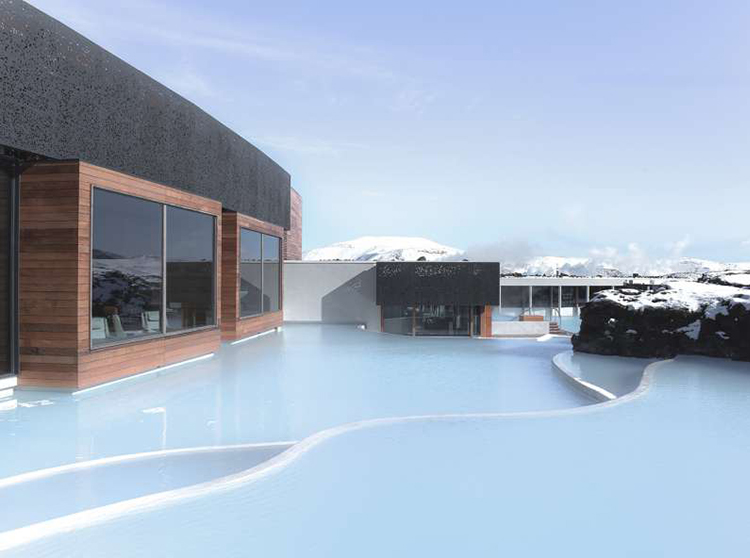The Jade Museum is an art museum and exhibition space in a former office building in downtown Shanghai, China. While the exterior of the building was left in its original state, the interior was entirely gutted and the dynamics changed in order for it to function in its new role.
In order to coordinate the complexities of a three level multi-functional space and to keep within a specific budget and time limit, the practice of Archi-Union Architects employed a digital program together with a CNC fabrication method to ensure a natural flow of the complicated curvilinear design of the interior.
The 1.000 sq.m. three level space has two floors of exhibition galleries topped by a meditation room, study room plus staff kitchen and dining room. The levels are connected via a soaring concrete staircase, an object which changes form as it alternatively spirals, twist and turns, connecting split levels to angled bridges which lead to the smaller galleries. A central courtyard floods the interior with natural daylight throughout the contrasting spaces, where daylight is required. A place which avoids natural light is a dramatic cave like space, its dramatic curving walls becoming an art installation in their own right. Light is kept to the minimum and just the exhibits are illuminated enough to guide the visitors around the gallery.
